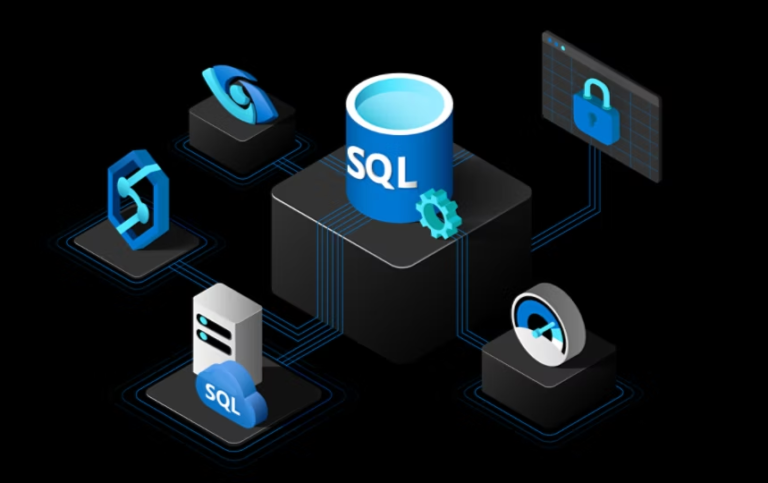In artificial intelligence (AI), data is the backbone that drives insights, predictions, and decision-making. However, the data must be carefully explored, analyzed, and prepared before any AI model can be trained or deployed.
SQL (Structured Query Language) is an indispensable tool in this process, as emphasized in many AI tutorials. SQL allows data scientists and AI practitioners to interact with databases, manipulate data, and extract meaningful information that can be used in AI models.
The Role of SQL in Data Exploration
Data exploration is a critical step in any AI project. It involves understanding the data’s structure, distribution, and quality before applying any machine learning algorithms. SQL provides a powerful, flexible, and efficient way to explore large datasets stored in relational databases.
1. Basic SQL Queries for Data Exploration:
– SQL’s SELECT statement is fundamental for querying data. It allows users to specify which columns of data they want to retrieve. For instance, `SELECT * FROM customers;` retrieves all columns from the ‘customers’ table, giving an initial look at the data.
– Filtering data with the WHERE clause is crucial for exploring specific subsets. For example, `SELECT * FROM sales WHERE amount > 1000;` helps identify high-value transactions.
– Sorting data with the ORDER BY clause enables users to analyze data trends, such as finding the most recent transactions or highest sales.
2. Aggregating Data for Summary Statistics:
– SQL’s aggregate functions like `COUNT()`, `SUM()`, `AVG()`, `MIN()`, and `MAX()` allow for summarizing data. These are essential for generating insights that can guide AI model development. For example, `SELECT AVG(salary) FROM employees;` calculates the average salary of employees, which can be used in models predicting salary trends.
– Grouping data with the GROUP BY clause enables more detailed analysis. For example, `SELECT department, AVG(salary) FROM employees GROUP BY department;` provides the average salary per department, which could inform AI models predicting department-specific trends.
3. Joining Tables for Comprehensive Data Analysis:
– In many databases, relevant data is spread across multiple tables. SQL’s JOIN operations are essential for combining these tables, allowing for a more holistic analysis. For instance, a query like `SELECT customers.name, orders.amount FROM customers JOIN orders ON customers.id = orders.customer_id;` combines customer and order data, which can be pivotal for AI models that predict customer behavior based on their purchase history.
– Advanced SQL queries often involve multiple joins, subqueries, and complex conditions, which are integral in preparing datasets for AI models.
SQL Tutorial for AI Data Exploration
For those new to SQL, starting with a comprehensive SQL tutorial is crucial. These tutorials guide users through the basics of SQL syntax, data manipulation, and complex query formation. As you progress through an SQL tutorial, you’ll gain the skills to perform sophisticated data exploration tasks essential in AI projects. Many SQL tutorials also include hands-on exercises, allowing learners to practice writing queries and gain confidence in manipulating and analyzing data.
Advanced SQL Techniques for AI Data Analysis
As you delve deeper into data exploration, advanced SQL techniques become essential:
1. Window Functions:
Window functions like `ROW_NUMBER()`, `RANK()`, and `LEAD()/LAG()` are invaluable for time-series data analysis, which is common in AI models that deal with temporal data. For example, using `LAG()` can help identify changes in customer behavior over time, a key feature in predictive AI models.
2. Subqueries and CTEs (Common Table Expressions):
– Subqueries and CTEs allow for more readable and maintainable SQL code. These features are particularly useful when dealing with complex queries needed for AI data preparation. For example, a CTE can be used first to filter data and then apply more complex calculations, streamlining the process of preparing data for AI algorithms.
3. SQL Compiler and AI Tutorial Integration:
– To practice these advanced techniques, using an online SQL compiler is recommended. An SQL compiler allows you to write and execute SQL queries interactively, offering immediate feedback and results. Coupling this with an AI tutorial demonstrating how these SQL techniques apply to real-world AI scenarios can greatly enhance your learning experience.
Applying SQL Insights to AI Models
Once the data has been thoroughly explored and analyzed using SQL, the next step is to apply these insights to AI models. Data extracted and refined through SQL queries can be input features for machine learning algorithms. For instance, customer segmentation data derived from SQL queries can feed into a clustering algorithm to identify customer segments. Similarly, sales trends identified through SQL can be used to train a time-series forecasting model.
SQL Tutorial for AI Model Optimization
As AI models are developed, SQL continues to optimize and validate them. For instance, SQL can query predictions and compare them against actual outcomes stored in the database, enabling continuous model evaluation. An SQL tutorial focusing on this aspect can help practitioners understand how to integrate SQL into the AI model lifecycle.
Conclusion
SQL is an essential tool for data exploration and analysis in AI projects. By mastering SQL through a structured SQL tutorial and practicing with an SQL compiler, you can unlock the full potential of your data, enabling more accurate and effective AI models. Whether you filter data, calculate statistics, or combine multiple datasets, SQL provides the foundation to prepare and analyze data for AI applications.

